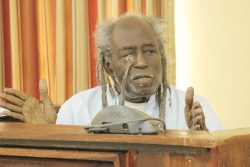Easter is a religious festival that exhibits the regular characteristics of the large festivals of its type. This means, among other things, that in the course of its evolution it has also fallen into other categories. It is an old and established traditional festival and a national festival in countries across the Christian world. There is great significance in its existence as a calendar festival and like most of the others with religious roots and purpose, it has long been a popular festival.
Easter is a celebration of the Christian religion, called by an Old English word – Eostre. Because of the basic belief that it dramatises, the festival consists of two important days – Good Friday and Easter Sunday. In most countries, it is really three days, with the addition of Easter Monday. This Monday is a public holiday in many parts of the world and is mainly festive – representing the high point of the popular festival highlighted by secular entertainment. Additionally, it is a highly influential season coming out of Christendom that makes its presence felt upon the western world. The festival is actually longer than those three days, and the week-end which is only its climax.
 Easter proper runs for one full week known as Holy Week, beginning on Palm Sunday, building up to Holy Thursday (the Eve of Good Friday), culminating on the Easter weekend with its three ‘Easter’ days. Even the Saturday that comes in between is often referred to as ‘Easter Saturday.’ To go further, Easter’s significance as a calendar festival takes it back much earlier to a period known as Lent. This begins on Ash Wednesday and runs for 40 days leading up to Good Friday. Lent is a long period of preparation and Ash Wednesday properly starts off the ‘Easter season.’ They are so closely related that things of Easter are described as ‘Lenten,’ and things which define Lent, also define Easter.
Easter proper runs for one full week known as Holy Week, beginning on Palm Sunday, building up to Holy Thursday (the Eve of Good Friday), culminating on the Easter weekend with its three ‘Easter’ days. Even the Saturday that comes in between is often referred to as ‘Easter Saturday.’ To go further, Easter’s significance as a calendar festival takes it back much earlier to a period known as Lent. This begins on Ash Wednesday and runs for 40 days leading up to Good Friday. Lent is a long period of preparation and Ash Wednesday properly starts off the ‘Easter season.’ They are so closely related that things of Easter are described as ‘Lenten,’ and things which define Lent, also define Easter.
Yet it is a bit more complex than that, because as a calendar festival, its significance goes back even earlier in the year. It actually starts after Christmas with what became a carnival period. This period was imposed upon the Caribbean by Europeans, in particular, the Roman Catholics, so that in countries with a very strong history of Catholic colonisation, such as Trinidad, Brazil, St Lucia, Dominica and other parts of the Eastern Caribbean, there is a tradition of Carnival. Other countries outside of this belt, mainly with an Anglican colonial history, such as Antigua and Barbados, did not have this Carnival. (They have adopted it now.)
Therefore, the calendar is fixed by a combination of ‘pagan’, secular and Christian factors, including Christian mythology. This fixed carnival period is allowed to run until Carnival weekend, falling mostly in February, sometimes in March. The Sunday is Mardi Gras or Dimanche Gras, followed by Carnival Monday when the road march begins. It continues on the big day, Carnival Tuesday, which is also the climax of these festivities. Significantly, that same big carnival day also has religious significance. It is Shrove Tuesday, the Eve of Ash Wednesday and the official beginning of Easter. All revelry on the road must end at midnight on Shrove Tuesday (although, perhaps for security reasons, the police have lately been shutting things down on the streets long before twelve).
Thereafter, the 40 days of Lent begin with several religious rituals performed on Ash Wednesday, including visiting the church for mas and the placing of ashes on the forehead of celebrants. After the close of riotous carnival revelry, Lent is a period of ascetism and personal deprivation. It is a sacred period of fasting when many favourite vices are sacrificed. Many people, including non-Christians and the seasonally religious, voluntarily give up such practices as eating meat or drinking alcohol, or any other earthly pleasure that they choose to forego.
This Lenten period is the observance of details of the Easter story in Christian mythology. Celebrants observe the time when Jesus the Christ retired to the ‘wilderness’ where he spent 40 days of piety preparing himself for the crucifixion and resurrection. At the end of this he rode into Jerusalem where the Romans would arrest him, arriving there on Palm Sunday (last week Sunday), so called because the people used palm leaves to welcome him as he came in. This begins Holy Week.
This illustrates how Easter, like religious festivals generally, is closely linked to literature and mythology, often based on stories which express beliefs and principles upon which the festival (and often the religion) is founded. Additionally, the celebration is highly symbolic – several symbols are used and may be found in elements of the celebration and the way the story, the beliefs, the principles are dramatised. Religious festivals, including Easter, make use of theatre or theatrical acts or rituals as a part of the way in which they are observed.
Holy Week continues with several stories found in the Holy Bible, the main text, the literature on which they are based. These include the ‘betrayal’ of Christ by Judas, one of his disciples, which facilitated his arrest by the soldiers of the High Priest Caiaphas, who then turned him over to Roman soldiers; his trial and execution by crucifixion on Good Friday; the way he is ‘let down’ by Pontius Pilate, who could easily have ‘saved’ him; the way he is tortured and forced to walk a long way bearing the cross on his shoulders. These are dramatic ironies because Jesus was not a victim of Roman oppression, the betrayal by his friends or the jealousy of Jewish priests. All that happened was a part of the divine plan of which Jesus was aware and which he allowed to happen, making himself a sacrifice in order to fulfil the grand design of giving his life in order to save mankind.
Christians believe that they can be saved from sin and eternal damnation not by any act of their own, but by their belief in Christ, whose sacrificial act was performed on their behalf. The Easter story is therefore a dramatisation of this. There are even many details within the story that support this in symbolic and thematic ways.
This makes Easter the most important festival on the Christian calendar because it marks the fulfilment of the Christ’s purpose on earth and the expression of God’s design. Today is Easter Sunday, and it is regarded as the most important day in Christian worship. It is the day of the Resurrection, on which Jesus arose and was brought back to life. He later ascended to heaven on a day known as the Ascension.
Although it is the most important day it does not nearly rival Christmas in grandeur and spectacle or popularity as a festival. Christmas far outstrips it in this respect. But Easter has given Christianity, practice, ritual and outreach some of its most visible symbols and messages. In many ways it is Easter, and not Christmas, that defines the religion. In keeping with the use of symbolism by religious festivals, the cross, or the sign of the cross, is the single most prominent expression of Christian belief or even Christian existence or presence. The ritual of the Holy Communion, comes from the symbolic sanctity of Corpus Cristi (the body of Christ) and the blood of Christ. These originate in the well-known and symbolic story of The Last Supper.
Easter has several elements of public outreach, as is customary in religious festivals. These transcend sacred practice and are observed by believers and non-believers alike. Yet they originate in sacred ritual, belief and express the principles of the religion. Only a very few will be mentioned in order to provide examples of how this works. Some of these are performed by the Church – for example the Roman Catholics perform a procession through the streets to dramatise Jesus bearing the cross to Calvary. Perhaps the largest and most spectacular Easter event is the Good Friday mass celebrated by the Pope at St Peter’s Square in Vatican City.
The eating of hot cross buns is a popular custom. These delicacies are baked with a cross fashioned into the top of the bun. It may be associated with the sharing of bread (the last supper/corpus cristi) and with the widely observed practice of not eating any meat on Good Friday. Similarly in Jamaica, the popular fare is bun and cheese, symbolic replacement for meat. Kites are flown at Easter, and in Guyana it is the most popular secular pastime, but still represents the Resurrection. It is believed to be a symbol of the risen Christ and the uplifting of mankind occasioned by him. Up until recently when this seems to have loosened, Good Friday was perhaps the most austere day of the year, when places were closed and all public entertainment ceased.
In contrast, Easter Monday is the grand fun day when the popular culture explodes with Easter entertainment. In some places revelry approaches carnival dimensions. This is also in keeping with the way secular fun attaches itself to religious festivals of all types and in many different religions. Easter, unlike most others, has a day on which this is splurged.









